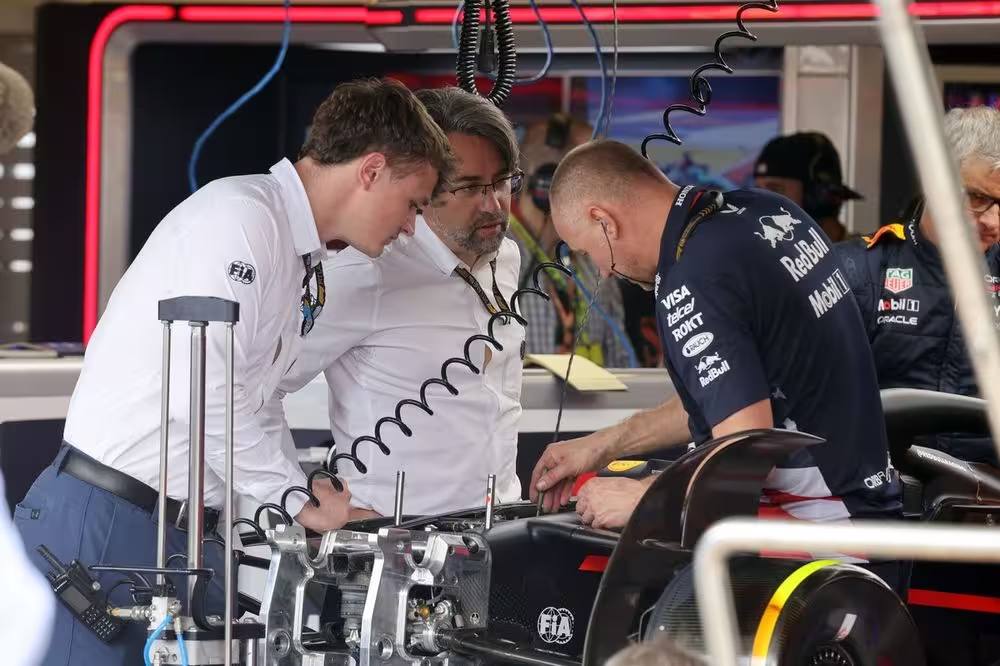The tech intrigue surrounding Red Bull’s front bib adjuster has thrown a spotlight on Formula 1’s parc ferme rules.
Central to the issue surrounding Red Bull is not that it had a device inside the car that can raise or lower the bib.
Instead, it all revolves around whether or not the team ever used it to make such a car change during parc ferme restrictions that are in place between the start of qualifying and the race.
The theory from some of its rivals is that it would be very simple for a Red Bull mechanic to lean in the cockpit with a tool and make such an adjustment on the sly.
Red Bull suggests such claims are nonsense and that it would have been impossible for it to do anything like that without getting spotted by the FIA, as it showed off a two-foot long tool that it says was used to make the tweaks in practice.
The views on both sides of the debate seem pretty entrenched right now. But, from the FIA’s perspective, the policing of parc ferme rules are pretty robust.
F1’s parc ferme rules are laid down in the sporting regulations and mainly allow only maintenance and safety changes, whether it be repairing accident damage, fixing broken components or alterations to improve driver comfort.
Set-up tweaks are heavily restricted and pretty much the only performance element that can be changed is the front wing flap angle. Teams cannot add, remove or replace bodywork parts.
If there are any parts of the car that the team wants to replace, then it must lodge a written request with the FIA and ensure that any new components are similar in design, mass, inertia and function to the original. Any parts taken off a car are also retained by the FIA should further checks be needed.
FIA delegates are checking the Red Bull Racing RB20 of Max Verstappen
Photo by: Andreas Beil
A watchful eye
To ensure teams comply with the rules, the FIA has two systems in place – one human and one electronic.
The first element is the use of scrutineers, who are assigned to each car for the duration of the weekend, to check the rules are complied with.
As the FIA’s deputy technical delegate Manuel Leal explained: “We have 20 scrutineers monitoring every single operation that is being done to the car and writing that down for us to check later.
“Also, at the beginning of the season, teams have to submit a list of operations they will normally conduct in parc fermé within the regulations, and we approve them or not.
“Each car…
Click Here to Read the Full Original Article at Autosport.com – Formula 1 – Stories…

